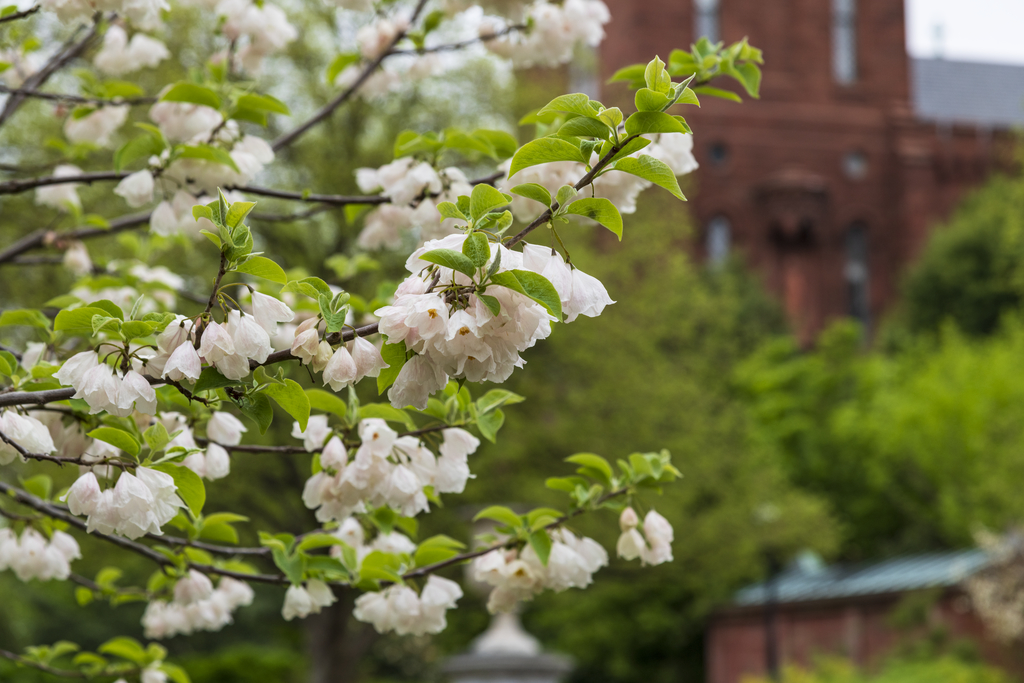Arbor Day Tree Planting
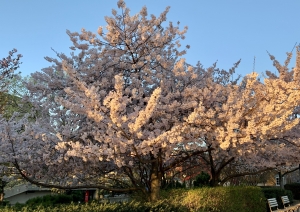 Arbor Day 2021 is April 30. Are you looking for an interesting tree to plant for your Arbor Day? With tens of millions of visitors enjoying our gardens each year, one of the primary collecting goals for the Smithsonian Gardens Tree Collection includes displaying and interpreting trees that are underutilized, useful, and/or unique in our regional landscape. In this way Smithsonian Gardens hopes to inspire everyone from casual home gardeners to professional landscape architects and horticulturists.
Arbor Day 2021 is April 30. Are you looking for an interesting tree to plant for your Arbor Day? With tens of millions of visitors enjoying our gardens each year, one of the primary collecting goals for the Smithsonian Gardens Tree Collection includes displaying and interpreting trees that are underutilized, useful, and/or unique in our regional landscape. In this way Smithsonian Gardens hopes to inspire everyone from casual home gardeners to professional landscape architects and horticulturists.
Here are a few of my favorite selections for the home gardener in the mid-Atlantic region that you can find on our campus as well as on our Plant Explorer website. You should be able to find most of these selections at your local nursery or garden center.
- Flowering Dogwood (Cornus florida)

While it’s not that uncommon, it’s a shade-loving, beneficial native tree that puts on quite a flowering show. You’ll find white- and pink-flowered high performing, disease-resistant cultivated selections in the Smithsonian Gardens Tree Collection, such as ‘Jean’s Appalachian Snow’. An upcoming addition to our collection, ‘Appalachian Spring’, is another great disease-resistant cultivated selection for gardens that are more susceptible to the disease pressures of dogwood anthracnose in our native forests.
- Nuttall Oak (Quercus texana)
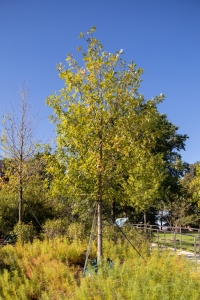
The oak is one of the best trees for native insects as well as native birds and wildlife. According to the National Wildlife Federation’s online Native Plant Finder tool, oaks in general support a staggering 373 species butterflies and moths. The Nuttall oak is an underutilized species that combines the best attributes of two relatively overplanted species of oak trees you may be more familiar with: northern red oak (Quercus rubra) and pin oak (Quercus palustris).
- Witch-hazel (Hamamelis virginiana) & Hybrid Witch-Hazel (Hamamelis x intermedia)
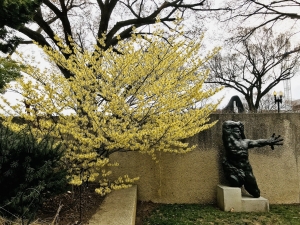
When other tree species’ flower buds are silent, the genus Hamamelis is in peak bloom. It also provides a great variety of spreading, small shrub-to-tree size choices for partial shade. Consider the fall-flowering native witch-hazel (Hamamelis virginiana) or a late winter-blooming exotic hybrid such as the cultivar ‘Arnold Promise’. Need a late winter-bloomer that’s native to eastern North America? Try Ozark witch-hazel (Hamamelis vernalis) which you’ll also find on the Smithsonian campus.
- Silverbell (Halesia sp.)
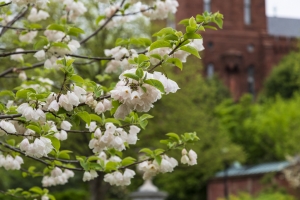
You’re more likely to see these trees in Appalachian cove forests than in garden landscapes, but if you can find a place that mimics the conditions of cove forests (moist, well-drained, highly organic, acidic soils in partial shade), you’ll have quite a unique garden specimen!
- White Fringe tree & Chinese Fringetree (Chionanthus virginicus & Chionanthus retusus)

I would agree with well-known plantsmen Michael Dirr and Keith Warren in characterizing the unique fringe-like flowers of fringe tree: “…among the most beautiful of all woody plants.” Try the native white fringe tree or the Chinese fringe tree for a delightful easy-to-grow tree.
- Bald Cypress (Taxodium distichum)
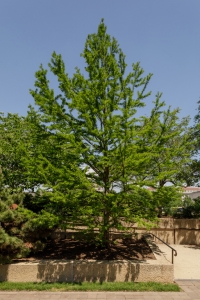
Everyone has that low, saturated spot that drowns out anything that’s planted. Bald cypress is your tree for that spot, but it’s a monster. Try the dwarf cultivated selections of ‘Peve Minaret’ for smaller spaces. You’ll find several other interesting, cultivated selections in our collection as well as the nearly-extinct-in-the-wild dawn redwood (Metasequoia glyptostroboides), a lookalike cousin of bald cypress.
- Paperbark Maple (Acer griseum)
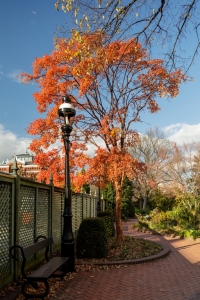
If you’re looking for a quiet, polite small-to-medium size shade tree with loud bark and good fall color, paperbark maple is for you.
- Hybrid Magnolia (Magnolia x)
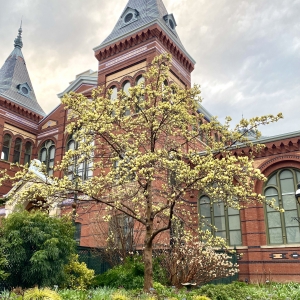
The efforts of magnolia breeders have brought about some truly stunning flowering trees since at least 1820 when French botanist Etienne Soulange-Boudin hybridized the saucer magnolia. (You may know the saucer magnolia from its stunning display each spring in the Enid A. Haupt Garden.) Magnolia ‘Butterflies’ is one of our favorite hybrid magnolias because its yellow flowers are derived from its North American native parent, cucumber tree (Magnolia acuminata), while its more palatable size likely comes from its Chinese parent, Yulan magnolia (Magnolia denudata).
- Overcup Oak (Quercus lyrata) & its native white oak group cousins: swamp white oak, live oak, swamp chestnut oak, and bur oak

Overcup Oak (Quercus lyrata) & its native white oak group cousins: swamp white oak, live oak, swamp chestnut oak, and bur oak Many gardeners are familiar with the true white oak (Quercus alba), but less familiar with its close cousins who share many of the same attributes while being more adapted to soil conditions common in yards, gardens, and urban areas. What is my favorite white oak group tree on our landscape? Quercus lyrata ‘Highbeam’, a cultivated selection recently installed at the Smithsonian’s Anacostia Community Museum. Look for future additions!
- White-Flowering Form of Eastern Redbud (Cercis canadensis f. alba)
Washington, D.C., is known worldwide for its cherry blossoms. We love them! We also love the benefits of regionally native trees and tree diversity in gardens and urban forests. For this, white-flowering eastern redbud provides an excellent option to match the form and flowering of the iconic Yoshino cherries that adorn D.C.’s Tidal Basin. It also extends the cherry blossom season since its peak bloom is slightly later than that of the Yoshino cherry.

